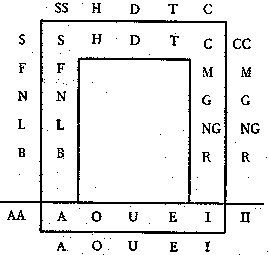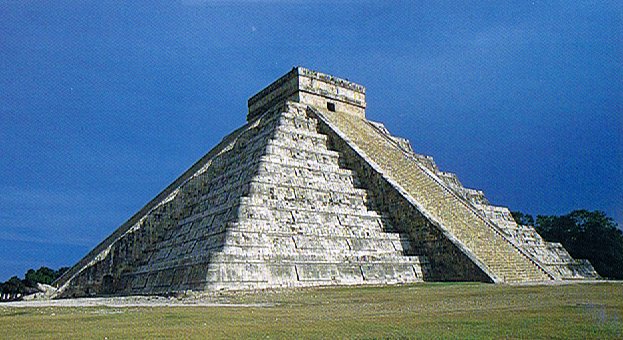|
TRANSLATIONS
Yesterday, after having written about bit, I saw a wasp crawling on the floor and I smashed it. It was the first such killing of the year. Coincidence? Well, living in harmony with mother nature it is not so strange. Midsummer solstice will arrive soon, only a fortnight further on. Insects are increasing. More strange is the fact that I had bought, some weeks ago, fig marmalade. I mostly prefer citrus fruits or ginger and it is very seldom fig marmalade appears of the breakfast table. Thinking about the synchronisms (killed wasp and the sweet fig marmalade contra bit and sycomore fig development) I arrived at the conclusion that these two synchronisms were 'real', not just coincidences resulting from the chance occurences of at least somewhere sometime simultaneous and correlated events. Furthermore, the origin of the synchronisms are internal (in me), not external (outside me). The season probably influenced me to arrive at hua poporo in the glyph dictionary at the proper time - before midsummer - and to reach out for the Egyptian parallel season, when their important fig tree hua depended on the symbiotic wasps. The development was not a result of my consious planning, it just happened. Maybe subcounsciously it was planned, and maybe the choice of marmalade was a way to call for my attention. The wasp may not have been the first one this year, it may be the first one to be perceived by my consciousness. Maybe, in Metoro's mind, Aa6-55 implied how hua (new generation) necessarily implied a 'departure' (ihe):
The season is 'zenith', when boys become men and girls women. In Ka5-4 a canoe for the 'spirit' is due for departure, I think:
The flat midsection (hua) is flanked by at left the season of growing and at right by the season of descending. The division into 3 parts reminds me of the Mamari moon calendar:
The form is neither that in Π and nor that in the skyreaching Taranaki store house:
A truncated pyramid is closer to what we search for:
Such a pyramid may be regarded as a pyramid with its head cut off. The common denominator for 'zenith' is the flat solstitial - obviously something at the top is missing. Beyond solstice the 'lost head' will travel downwards, down the stairway. Water is characterized by its tendency to move downwards. The tu'a season therefore must correspond to the water season and a canoe is necessary for the downward travel. In the Mamari moon calendar the shape of a canoe on the back side of the sleepy old bird has departed in period 6, but already in period 4 it is ready:
In period 5 a complex glyph seems to illustrate - among other things - who the passengers are. (The bird too has turned around to study the canoe.) It looks as if there is one sun in the front and another one at the back, while moon sits in the middle. This is in harmony with how we have found, e.g. in the G calendar, how the 'night' half year is divided in two - the season before summer and the season after summer; a lunar description, contrariwise, should have moon in the center with one 'day' in front (mua) and one at the back (muri). Here we ought to remember the 'upside-down' ideas of the Maori:
Time is an illusion. Sun is creating time by his movement and we read his time from the contrary movement of a shadow cast by a gnomon. The 'shadow', moon, is simultaneously creating time by her illumination, and she is born in the west, travelling in a direction opposite to the sun (withershins). Her time is not perceived with the help of a measurement stick but immediately perceived from her form. ... when the new moon appeared women assembled and bewailed those who had died since the last one, uttering the following lament: 'Alas! O moon! Thou has returned to life, but our departed beloved ones have not. Thou has bathed in the waiora a Tane, and had thy life renewed, but there is no fount to restore life to our departed ones. Alas' ... Considering this view, we can correlate new moon with 'zenith' sun - the reason moon has been unvisible is that she has been crossing the path of light from the sun to us. The sun light is the 'living water' of Tane. The water running downwards on the tu'a side of the 'truncated pyramid' is the 'water' of moon, more similar to the water down on our earth, yet not the same. Moon was considered as being closer to the earth than sun, who travelled closer to the other stars. Closer in distance implies closer in kind. Water is heavy, as the head in moe glyphs:
Feathers and fire flames are light. |
||||||||||||||||||||||||||||||||||||||||||||||||||||||||||








